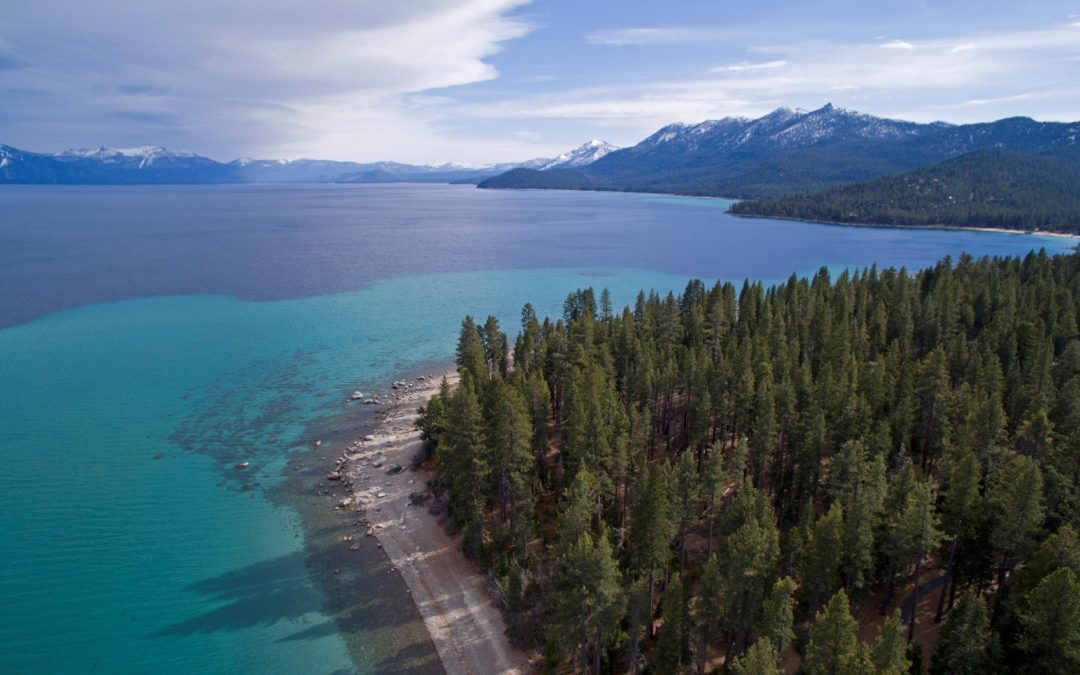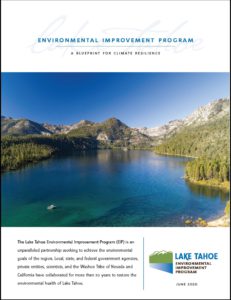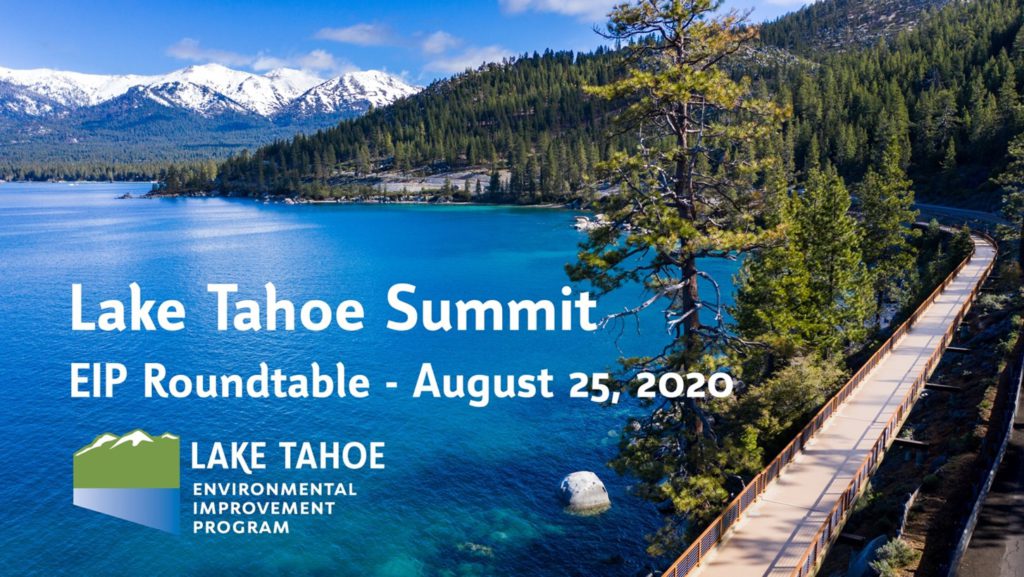The resiliency of Lake Tahoe was the focus of the 24th annual Lake Tahoe Summit August 25, 2020. In the year of COVID-19, US Senator Catherine Cortez Masto (D-Nev.) hosted the event virtually instead of on the Lake’s beautiful shores. Since the first Summit featuring President Bill Clinton in 1997, the annual meetings have brought national focus to the broad partnership working to protect Lake Tahoe’s water quality and communities while building its resiliency to withstand invasive species, wildfire, and climate change impacts.
Immediately following the summit this year, TRPA held a special roundtable discussion about the Environmental Improvement Program, one of the largest restoration programs in the nation. During the discussion, community members and local leaders posed question and thoughts for follow up. Those discussions are captured below.
Roundtable Questions and Answers
1) Question asked by City of South Lake Tahoe Councilman Cody Bass:
How can we define the capacity for the amount of vehicles that should be allowed in the basin at one time, and is it now time to begin monitoring the amount in the vehicles that have entered the basin and work toward legislation that allows us to enforce that defined capacity?
Roundtable Answer:
Thank you for bringing up an important topic. The Lake Tahoe Regional Plan sets limits on development in the Tahoe Basin which has historically limited the Region’s carrying capacity. The Regional Plan’s environmental standards plus policies such as land coverage also limit the footprint of the built environment. In recent years, day-use visitation and travel has sky rocketed, putting additional pressures on public recreation lands. In the 21st century, investments in technology and infrastructure are critical to managing the surging day-use visitation. Because Lake Tahoe is not a national park and a federal highway runs through the Tahoe Basin, limiting vehicle access is complicated and challenging. Transportation solutions are necessary to address this growing area of concern.
2) Question asked by Susan Jamerson, Washoe Tribe of Nev. and Calif.:
In terms of workforce development, I wanted to mention the CHIPS program which trains Washoe Tribal Members in forestry restoration. They have been working in all the local forests under contracts with federal agencies. We would like to train more Tribal members in beneficial fire techniques and get them redcarded to assist on active fires. There are needs for additional funds for job training and certification. Thank you.
Roundtable Answer:
Thank you and the Tribe for being a part of the Tahoe Summit. It is an honor to stand with you as stewards of the area. We would like to find out more about the Tribe’s programs and see where we can assist. Your help is much needed.
3) Question asked by Deb Howard, South Lake Tahoe:
Gov. Sisolak asked a very good question related to the vacation home rentals/short term-rentals and its impact on the natural resources. Our TRPA executive director answered with all good intel. To expand slightly on the impacts of the visitation for and on our short-term rentals and the huge demand for same, that and now as well the impacts of the turnover of many of these homes now life cycling into primary residences for many tech and other workers that can work from home. The impacts on the resources are yet TBD.
Roundtable Answer:
Vacation home rentals and short term rentals are a critical topic for resort towns as populations change and move and as workforce housing supplies dwindle. Local governments need to continue finding approaches that work for their individual communities while resources and regional planning are brought to bear in support of achievable housing.
4) Question asked by Deb Howard, South Lake Tahoe:
Will this be recorded for repeat listening/viewing? I need to listen again as it was great info—and a lot of it!
Roundtable Answer:
Thank you providing your contact information. We will send you a link to the recording as soon as it is available. We are glad you found it interesting.
5) Question asked by Susan Jamerson, Washoe Tribe of Nev. and Calif.:
Dr. Averyt, Dr. Heyvaert and Mr. Kraatz, The Washoe Tribe has done extensive Climate Change planning for the past 3 years which includes strategies for land in both Nevada and California as well as on properties in the Tahoe Basin. I would love to share this information and discuss with all of you. My contact info: Susan Jamerson, Environmental Director, Washoe Tribe, email: susane.jamerson@washoetribe.us
Roundtable Answer:
We have shared your information and forwarded your note to Dr. Heyvaert and Mr. Kraatz about the climate change planning the Tribe has done. Hopefully we can provide you a fruitful connection.
6) Question asked by Abdelmoez Abdalla:
What do you think the role of universities in finding innovative ways to combat fires?
Roundtable Answer:
Higher education and research institutions in combatting wildfire and protecting communities. From training to forestry to climate science, our approach to addressing the threat of catastrophic wildfires needs to be a holistic approach and the work will need to capitalize on higher education.
7) Question asked by Nevada Department of Conservation and Natural Resources Director Bradley Crowell:
As a quick reminder to all re: forest management (and potentially job training), NV has a small state-owned biomass facility that could be brought back online if funding could be identified.
Roundtable Answer:
Thank you for your note during the EIP Roundtable at the Tahoe Summit regarding biomass in Nevada. The overwhelming amount of forest debris from hazardous fuel reduction projects is a major challenge as well as the limited facilities available to handle biomass. Hauling costs are often prohibitive to plants far away from Lake Tahoe. If the Carson City prison biomass facility were to become operational again, fewer piles would be left in the forest and transportation costs would be reduced. Additional investments would in regional biomass would benefit forest health initiatives.



